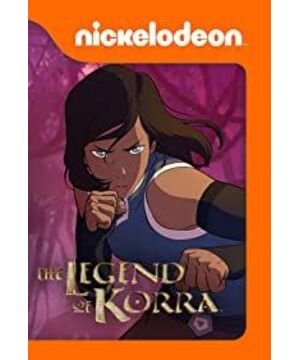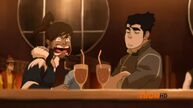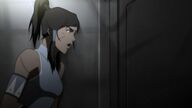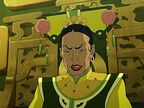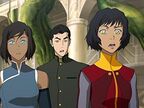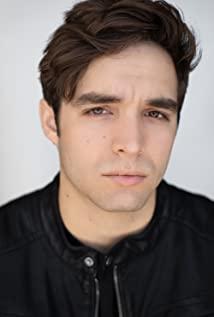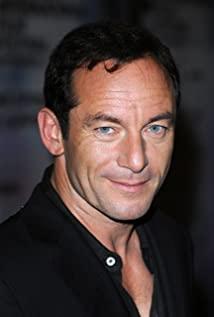When the author entered the pit in 2015, when the country was in danger, and there was nothing to do at home, I suddenly remembered this anime I watched 5 years ago. For a long time, the author feels that "Legend of Kola", as a part of the "Supernatural Powers" series, absolutely bears the word "God Works". But unfortunately, in the past 5 years, whether it’s Baidu Tieba or major forums, almost all viewers’ views are one-sided-"The Last Chizong" is much better than "The Legend of Kola", and they give Almost all of his evaluations are "no matter how nonsense the plot of Qi Zong is, they are all with relish, but Cora can't stand it after watching a few episodes." In fact, when I recently returned to the pit, I found that I had forgotten most of the plots of Qizong, but most of Cora's plots are still fresh in my memory. Since the evaluation is always one-sided, then the author has to doubt whether this is the case or is due to prejudice. Therefore, in the spirit of evidence-based thinking, this article will discuss some of the so-called "slots" in The Legend of Kola. Of course, the author's level is limited. If there is any improper expression, please point it out in time.
1 Objective shortcomings
Even if it is made by God, it is impossible to be flawless. Therefore, even a silly fan like the author must regain his senses at this moment and humbly admit that there are some shortcomings that cannot be ignored in The Legend of Kola.
1.1 The "Love Triangle" of Cora, Asami, and Mark
This is an extremely common criticism that the emotional drama of "Legend of Kola" is messy-Mark has been vacillating between Kola and Mami. This is of course a shortcoming that cannot be ignored. However, as a straight man who has been in the American comics circle in the early years, the author thinks that this point should not die, and if you want to directly deny the whole work because of this point That is even more undesirable behavior. First of all, the series of "Available Magical Powers" has never been a romantic drama, and emotions are at best a starting point. Qi Zong’s emotional line is single and pure, which is great, while Cora’s emotional line is messy but also in line with reality. After all, true love is almost never achieved overnight. Secondly, the "Available Magic" series belongs to Mei Manga after all, and similar plots are not uncommon in Mei Manga, and even worse. To give a very typical example, New Yorkers have many harems of friendly neighbor spiders, such as Gwen, MJ, Black Cat, Silver Mink, Spider Silk, Aunt Marvel, etc., but I have almost never seen any of them. Comic readers call Peter Parker a scumbag. Therefore, the author is more inclined to think that the problem with Cora’s screenwriters is that they spend too much emotional time in a work that should describe an epic, to the point where the audience can't bear it. As for the emotional dramas themselves, it may be a matter of opinion. Anyway, the author does not have any feelings of appreciation or disgust for the depiction of these emotions, so I will not call Mark a "scumbag."
Note: The author has now completed all the plots of the first two volumes of Cora, and feels that Mami is the biggest victim in this love triangle. Thinking about it carefully, Mark may not be sincere to Mami, but he does love Cora. To be honest, in the plot where Mark and Cora broke up, although Mark was also wrong (he did not manage the balance between official and private matters), Cora's impulse and recklessness were the main reasons that ruined the relationship. If there is an empathy, the author will also act impartially in Mark's position, and in the end, Cora and Mark also sympathized with each other, and they broke up peacefully. In summary, the author's point of view is that in this relationship, Mark failed Mami too much, but he is still worthy of Cora on the whole.
1.2 The breakdown of character behavior in part of the plot
The author is currently rewriting the second volume "God". It has to be said that the first six episodes produced by the clown club not only collapsed in style, but also had a rather blunt plot. It feels that the behavior of the characters is forcing the plot to promote the development of the plot. Cora has clearly experienced a lot in the first volume of "Qi", but the first few episodes of the second volume give people the feeling that she has not made any progress, and it looks really bad. But in the author's impression, Cora has made great progress from the third volume, and should not be so reckless. However, since the author has not yet fully reviewed all the content, I will not make a statement.
Note: The first 6 episodes and 9th episodes of the second volume of "The Legend of Korra" are all taken over by the clown club. Therefore, compared with the first volume, the style of painting is not good. It is recommended that audiences who are new to the pit have low expectations for these episodes.
1.3 The main creator lacks control over the overall plot trend
The creators of the "Available Magic" series have always had one characteristic, that is, they are very good at listening to the opinions of fans and adjusting the original production plan in time. For example, Su Qi in Qi Zong was originally positioned as a one-off role, that is, she no longer appeared after the debut of "Xu Zi Samurai" in the first volume of the "Last Qi Zong" episode 4. However, given the popularity of the character As well as the opinions of the fans, Su Qi was able to return in the subsequent plot and eventually became a member of the supernatural power team.
Since the main line of "The Last Airbender" is quite concise, such changes may not have an excessive impact on the plot. But on the other hand, "Legend of Kola", because its main line is more complicated and interlocking than "The Last Airbender", such random changes are likely to cause the originally set plot rhythm to be completely disrupted.
Unfortunately, Mami is such a character in "Legend of Kola".
According to Cora’s first volume of the set "Qi" on page 22, Mami was originally positioned as her father, an out-and-out Equal Party spy, and used Mark to get close to Cora. Purpose. But as the creators changed their minds, they finally chose to let Mami join the supernatural power team. Unlike Su Qi, Mami was originally set to be a villain, so you can imagine how such a drastic change will affect Cora’s overall plot development, which can be seen from the series of operations by the creators. , They are not fully prepared for this. Even at the end of the entire series, Mami and Kola can only temporarily end with a lily ending to restore part of the reputation.
To sum up, although the author also likes Mami very much, the creators of "Legend of Kola" obviously do not have a good response strategy for such a temporary decision, and lack the ability to round the story, so that the plot will go after the control. The aspect looked pale.
2 "Slots" of subjective existence
In this piece of content, the author will make a factual, theoretical, and well-founded rebuttal to the so-called "slots" raised by some spectators from my own perspective.
2.1 Rare imperial arts and rotten streets
The so-called "rare imperial art" refers to imperial art that can only be used by talented imperial artisans, and its typical representatives include bloodbending, metalbending, and lightning generation. Among them, the performance of imperial blood technique is buggy, but it is not controversial, so the author will mainly analyze imperial gold technique and lightning generation.
2.1.1 Royal Gold
The main controversy of Yujinshu is its poor performance. According to a certain Kehei's remarks, the Royal Golden Master should not be afraid of Pingyin Tuan's electric shock gloves and robots, and his inability to do anything with higher purity metals is even more a failure. In fact, according to the 19th episode of the second volume of the "Last Qizong", Toph understands the impurity of gold because it has sensed the earthy impurities in the metal. Therefore, the essence of the imperial gold is still the essence of the earth. This also means that once the process of purifying metals is improved, it is normal for the Royal Golden Master to be unable to do anything with higher purity metals, and in the Kola era, this can be done. Therefore, if only relying on this point to deny Beilin Lin's royal gold technique, and even further draw the absurd conclusion that the royal mages of Kola's era were vegetables, the author would not agree.
2.1.2 Lightning generation
The author often sees a similar logic, that is, in the Kola era, a bunch of fire masters generated electricity in the factory, so the magical skill of the lightning generation in the Qi sect was reduced to the fate of the bad street in Kola. In this regard, the author will make two rebuttals. First of all, I am sure that the person who came to this conclusion should not have much statistical knowledge. Suppose I need to investigate how many Pyrotechnicians can generate lightning in the Kola era, then doing a sample survey in a place like a power plant can directly reflect the results of all Pyrotechnicians groups? This is a typical generalization. Secondly, there is a more direct evidence. In Qizong's related comic "Smoke and Shadow", Mei commented on the generation of lightning as "rare, but not so rare." Moreover, in the author's impression, Kolari's famous fire master, except for Mark and Zuko's grandson Ailuo, should not have the talent to generate lightning, and Amon's evaluation of Mark's fire protection level is also a "genius". To sum up, the author does not believe that the lightning generation technique has reached the point of a bad street in the Kola era.
2.2 "Eating Settings"
Since the production of "The Last Airbender" and "Legend of Kola" is four years apart, the timeline of the plot spans about 70 years. Therefore, some of the settings of the previous work may have changed during the Kola era, so that some Qizong fans feel uncomfortable, and use this as a reason to discredit the "Legend of Kola". However, as long as the audience can scrutinize them carefully, they will actually find that most of the settings between the two works do not appear to be contradictory. Therefore, the author will list some of the so-called "eating settings" operations in Kola in this section and give a reasonable explanation.
2.2.1 Can imperial arts be used in the spirit world
In the seventh episode of the first volume of "The Last Airbender", An Ang discovers that he cannot use imperial arts in the spirit world. In "The Legend of Kola", this setting seems to be overthrown. Whether it is the first generation of supernatural powers, or the later Kola and Tenzin, they can freely use imperial skills to fight Vatu in the spirit world. However, the author would like to remind one thing that in An Ang’s era, the gates of the two polar spirit worlds were not opened, so An Ang used meditation to bring his spirit into the spirit world. However, in the era of Kola, the entities of the concubine can directly enter the spiritual world through the spiritual gate. To sum up, the author is more inclined to believe that the imperial arts cannot be used by the imperial arts in the state of mental out-of-aperture, and the spirit world itself will not have any influence on imperial arts.
Note: The author's deduction has been hammered out, and the 9th episode of the second volume of "The Legend of Kola" gives a very clear explanation.
2.2.2 The origin of imperial arts
In "The Last Qizong", the origins of the four imperial arts are different. For example, the imperial water spell comes from the moon god, and the imperial fire spell comes from the dragon. According to the two episodes 7 and 8 of the second volume of "The Legend of Kola", the origin of all elements is from the lion tortoise. This may seem contradictory, but it is not. According to the author's point of view, the definition of Yushu is the ability to manipulate the four elements through certain martial arts routines. Therefore, to become a qualified conjurer, you need to meet two major requirements. One is to possess the talent of elemental power, and the other is to be proficient in manipulating elements. These two conditions are indispensable. In summary, the origin of imperial arts can be completely explained as the imperial arts masters initially obtained elemental powers from the lion tortoise, and through observing and imitating some natural phenomena or animals, they learned the methods of rational manipulation of these elements, so There is no such thing as eating settings.
2.2.3 The origin of supernatural powers
As the biggest plug-in in this series, there is no clear explanation for the reason for the magical powers in the "Last Qizong". Through the two episodes 7 and 8 of the second volume of "The Legend of Kola", the audience was able to understand the birth of the first generation of magical powers (a combination of the god of light, Rava and humans). However, because Kola was forced to separate from Lava in the last few episodes of the second volume, and even lost contact with the supernatural powers of the previous life, the setting of the demigod and demigod of the "survival supernatural power" was taken by some fans of Qizong. despise. The author just wants to express my feelings about this. In "The Last Qizong", although An Ang could not enter the supernatural power form freely at the beginning, the supernatural power form of An Ang is almost impossible to be defeated head-on. As a result, "The Last Qi Zong" has no suspense from the perspective of the overall story, because at the last moment, as long as An Ang can enter the form of supernatural powers, he can definitely turn the tide. On the other hand, Cora, although her supernatural powers are powerful, they are not invincible. Although this setting may not directly reflect the growth of the protagonist, it is more conducive to the development of the plot, and this is one of the reasons why the author prefers "The Legend of Kola". The author believes that it is precisely because the "Legend of Kola" explains the origin of supernatural powers, from the perspective of supernatural powers alone, Kola's shaping is more plump and more real than An Ang.
In addition, the performance of the first generation of supernatural powers in the "Legend of Kola" is also extremely wonderful. When he first entered the form of supernatural powers and used the four elements to defeat Vatu like moving clouds and flowing water, the profound meaning of imperial arts was truly established. stand up. In "The Last Qizong", although the explanation of Yushu is subtle and delicate, most of it is superficial, even if it is simply understood as a superpower. But in The Legend of Kola, the story of the first generation of magical powers undoubtedly successfully endowed the four imperial arts with religious and inheritance. After this foreshadowing, imperial art has long surpassed the category of "superpower" and has become a universal, sacred, broad and inclusive force that maintains the balance of the world, and its significance has been further sublimated. In the author's mind, the imperial technique at this time is already a kind of existence similar to the "Force" in "Star Wars".
-------------------------------------------------- -------------To be continued---------------------------------- -----------------------------------
View more about The Legend of Korra reviews


